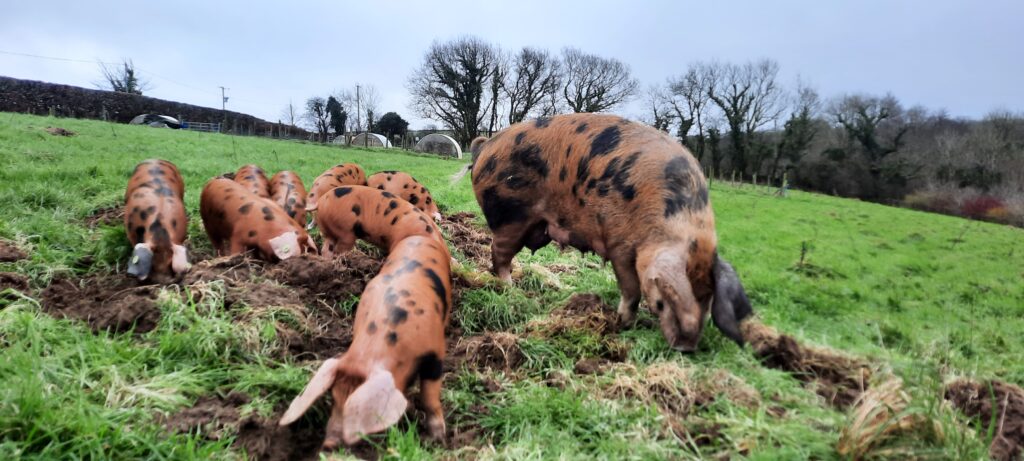
Gastric ulcers in our pigs can affect all ages, but is more commonly observed in working boars and sows. The primary causes of gastric ulcers in pigs is associated with diet, stress, and overworking of boars. Clinical signs of gastric ulcers include weight loss, teeth grinding, vomiting, black faeces, and sadly in severe cases, sudden death.
Upon examination, the stomach may contain dark or black blood, sometimes with large blood clots, while chronic cases may exhibit black streaks in stomach. Ulcers can range from mild erosions to large ulcers with thickened, scarred wall boundaries. Chronic ulcers may bleed more profusely than acute ones due to capillary blood vessels continuously oozing blood over time. Acute death can occur if the ulcer invades an underlying large blood vessel.

Treatment for growers and finishers involves timely administration of injectable antibiotics, although consultation with a veterinarian is crucial for proper guidance and instruction. It is imperative to avoid administering Metacam if gastric ulcers are suspected.
Causes: Factors such as the presence of the pig helicobacter H. suis in the stomach, bacterial fermentation of carbohydrates leading to organic acid production, and stresses like transport, starvation, mixing, and overcrowding can increase the incidence of gastric ulceration. It has also been observed that certain feeds and nutrition may play a role in the development and exacerbation of gastric ulcers.

Clinical Signs: Pigs affected by gastric ulcers are often found dead despite being in good condition. Clinical signs may include acute intra-gastric haemorrhage, characterised by the inability to rise, rapid breathing, teeth grinding, refusal to eat or drink, low body temperature, and cold, pale mucous membranes (ie. gums, nose). Sub-acute cases may exhibit intermittent melena, passing dark, dry faeces, with loss of appetite, and reduced growth rate. Diagnosis can be challenging, but endoscopy under anaesthesia can aid in visualisation of ulceration.
Treatment and Prevention: Treatment involves supportive care which is via blood transfusion or intravenous fluid therapy, and administration of ranitidine syrup orally. Antimicrobial cover may also assist in recovery. Prevention strategies include reducing stress, relieving overcrowding, proper ventilation, increasing dietary fibre levels (IE oats or sugar beet pulp), and supplementing inadequate levels of zinc, selenium, and vitamin E.
In conclusion, understanding the causes, clinical signs, diagnosis, treatment, and prevention strategies for gastric ulcers in pigs is essential for maintaining herd health and welfare with our Oxford Sandy and Black Pigs. Collaborative efforts between veterinarians and pig producers are crucial in effectively managing this condition.
The Oxford Sandy and Black Pig Group is UK’s only pig breed that is a registered charity in England & Wales (1190469) and Scotland (SCO52662). We are creating a better future for our breed the bloodlines and the breeding potential together with our Independent Pork Producers, Breeders and Oxford Sandy and Black Keepers and their families. Please click the donate button so we may continue to look after our breed and our supporters
Follow us on Facebook and see how we support, help and inspire individuals about our beautiful rare breed